(ED—We visited with Tony Jenkins about his epic snowmobile trip to Greenland this past spring and got a whole lot of information about his multi-day trip. Because of all the information—and photos—we’re breaking the story up into two parts. This is Part 1 of 2).
How many of us can truly say we’ve experienced the snowmobile trip of a lifetime?
That phrase, “of a lifetime” is thrown around quite a bit these days and it seems lots of people are saying their recent experience was the best this or that “of their lifetime.” For some that’s probably the case … for others, it’s just another superlative.
For Tony Jenkins, who lives in eastern Idaho, a snowmobile trip to Greenland this past spring certainly has all the makings of a trip “of a lifetime.”
We sat down with Jenkins earlier this fall and he gave us a pretty good rundown of this adventure, which included 13 nights on the ship Tulugaq or “Tulu” for short (Jenkins’ “home” for the duration of his time in Greenland) and six days of snowmobiling.
Part of the blog Jenkins wrote about his trip states, “When you hear of a trip of a lifetime, you usually wouldn’t typically imagine someone wanting to travel to a remote and unknown area located in the Arctic Circle to ride snowmobiles.”
Where No Sled Has Gone Before
Jenkins and his riding buddies rode in places in Greenland that, to anyone’s knowledge, had never seen a snowmobile before. It wasn’t overly technical riding as an extra abundance of caution had to be used due to crevasses, glaciers, unchartered territory, avalanche danger, etc. It’s not like if anything serious really went wrong, anyone else would be able to send in help. In most places, “help” doesn’t really exist.
But it was adventurous riding, seeing places no one has ever seen from the seat of a snowmobile and riding where no one has been before and likely won’t ever go again.
To make a trip of this magnitude more manageable, we decided to break it up into two parts, basically splitting the trip into two segments. We’ll proceed with a brief report on the daily happenings of the trip, beginning with his first day in Greenland. From his home in Idaho Falls, Jenkins travelled through Boise, Seattle and Iceland to get to Nuuk, the capital of Greenland and the island’s largest city (population 17,796).
The trip would take Jenkins and his riding group from Nuuk north along the western side of Greenland to Disko Bay, a trip of several hundred kilometers. Part of the adventure would take place near Qeqertarsuaq, a small village on Disko Island. After a few days of riding in this area, the group would head back south to Nuuk.
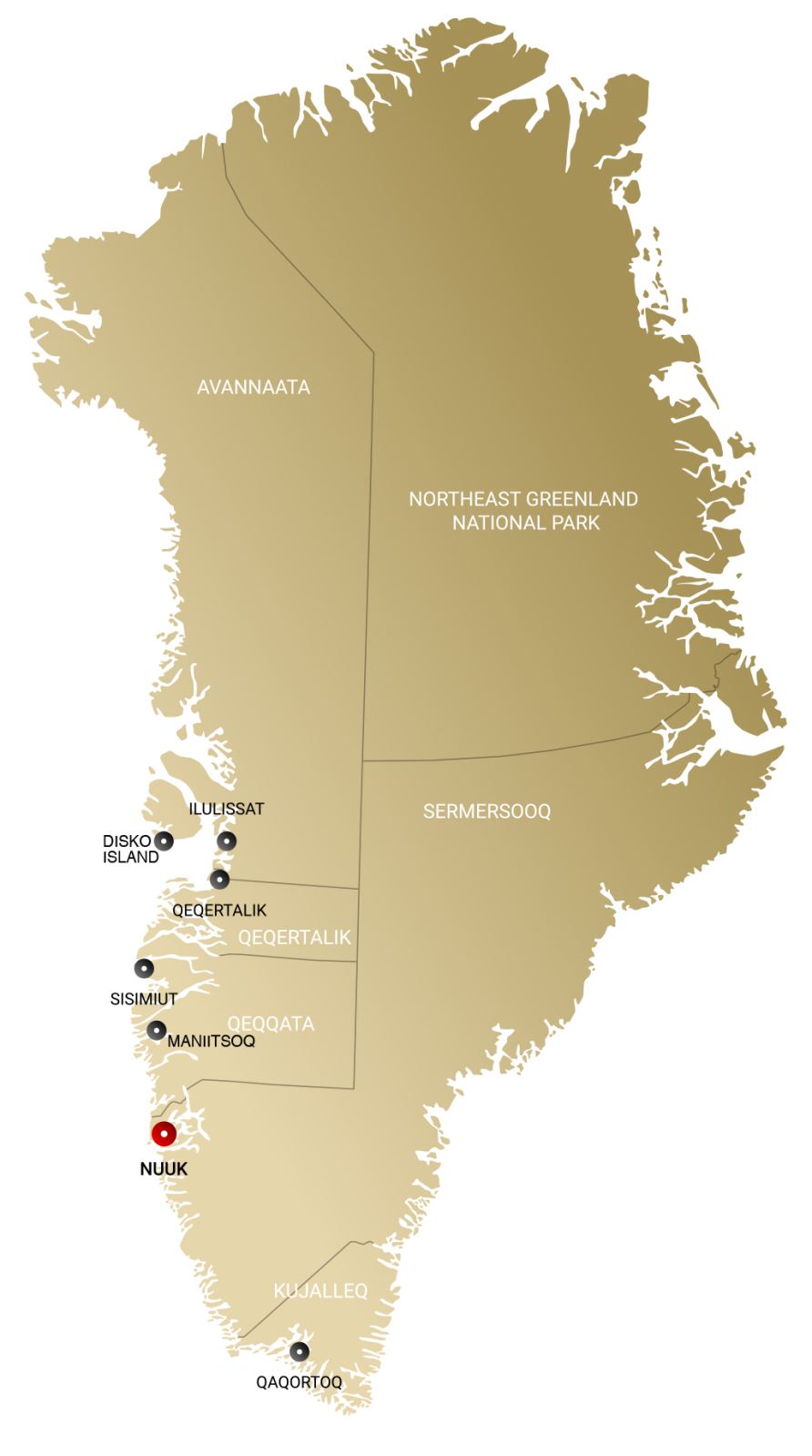
Day 1
This was preparation day for the group, which consisted of Jenkins, the only American on the trip. There was one rider from Iceland, another from Sweden (who has since made his home in Greenland), one from Denmark and the rest from Greenland. The group (16 in all) chartered an ice breaker ship—Tulu—which in its earlier days was a ship in the Danish navy. Now the ship, built in 1978, is used for excursions and comes with four licensed captains with several decades of sailing in the North Atlantic. The 100-foot long Tulu is powered by a two-stroke diesel engine capable of churning out 800 hp.
Part of that first day’s preparation consisted of rounding up 14 of the snowmobiles (Lynx sleds) and ferrying them to the ship on a small flatbed pickup. Jenkins got to see the local snowmobile club’s clubhouse, which consisted of several shipping containers built together “so the club could all have a private stall for their snowmobiles.” He added, “I thought this was pretty cool the whole sledding community got together and built this clubhouse, allowing everyone to have a heated area to dry off sleds and to work on them.”
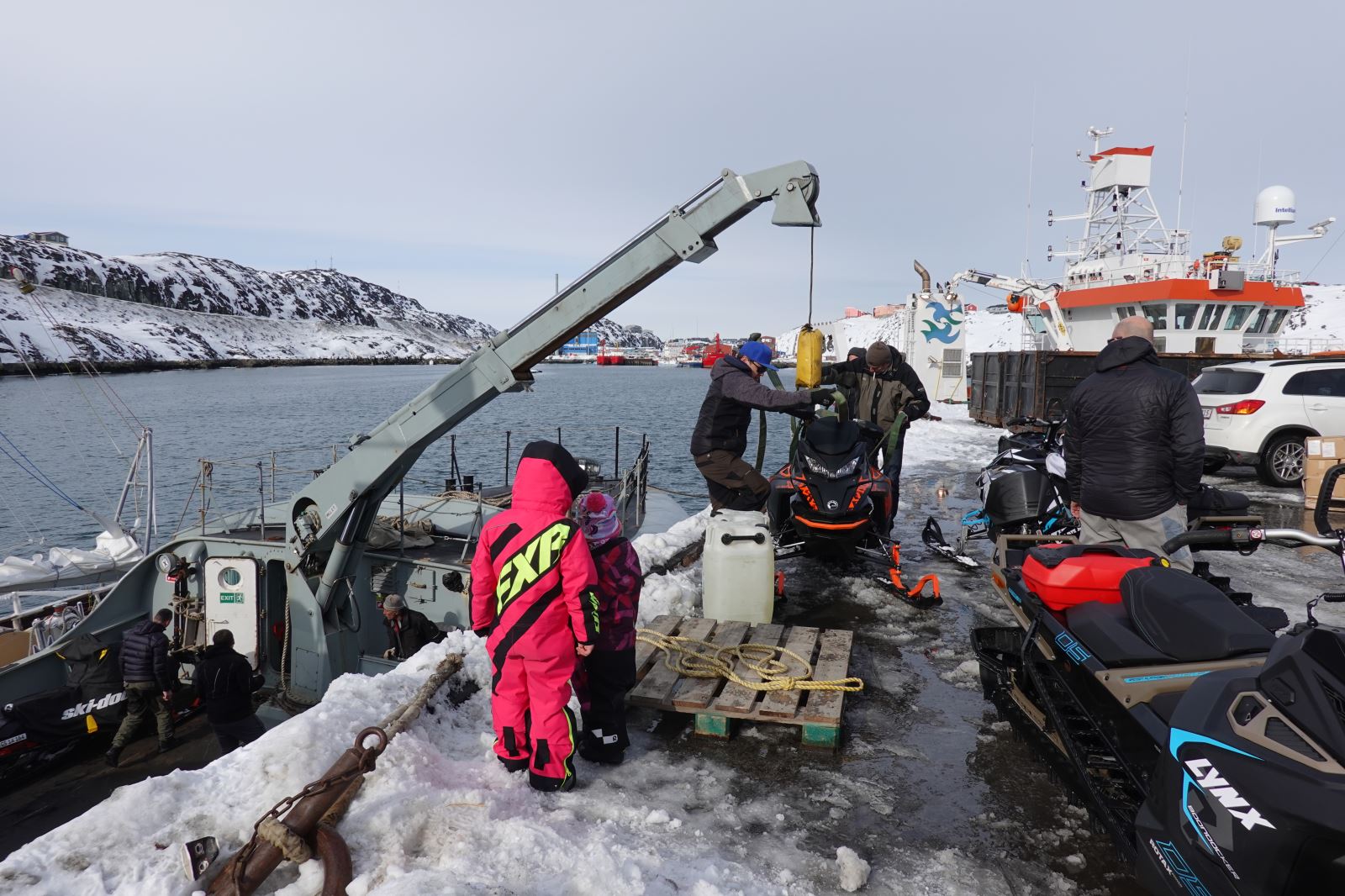
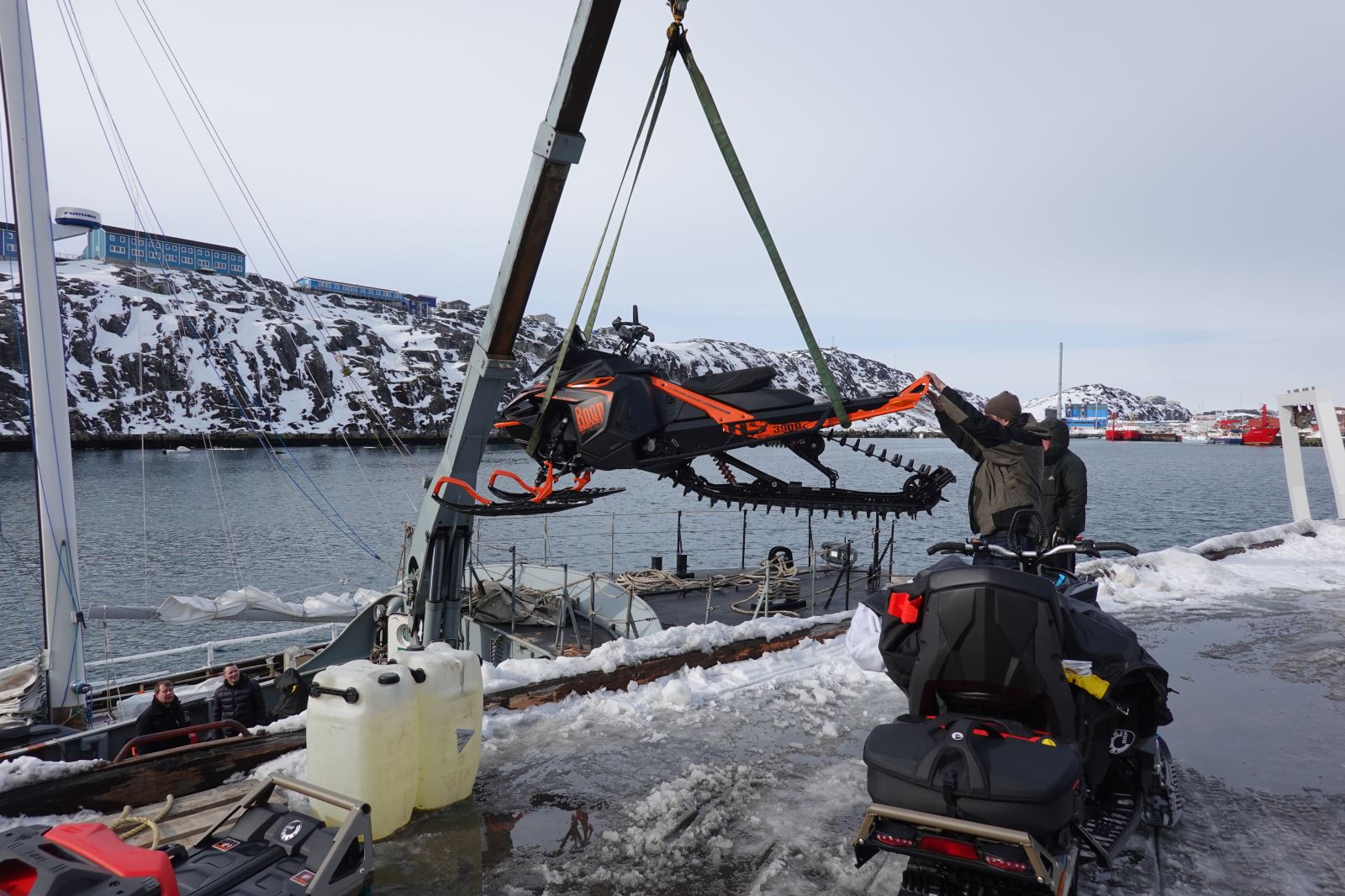
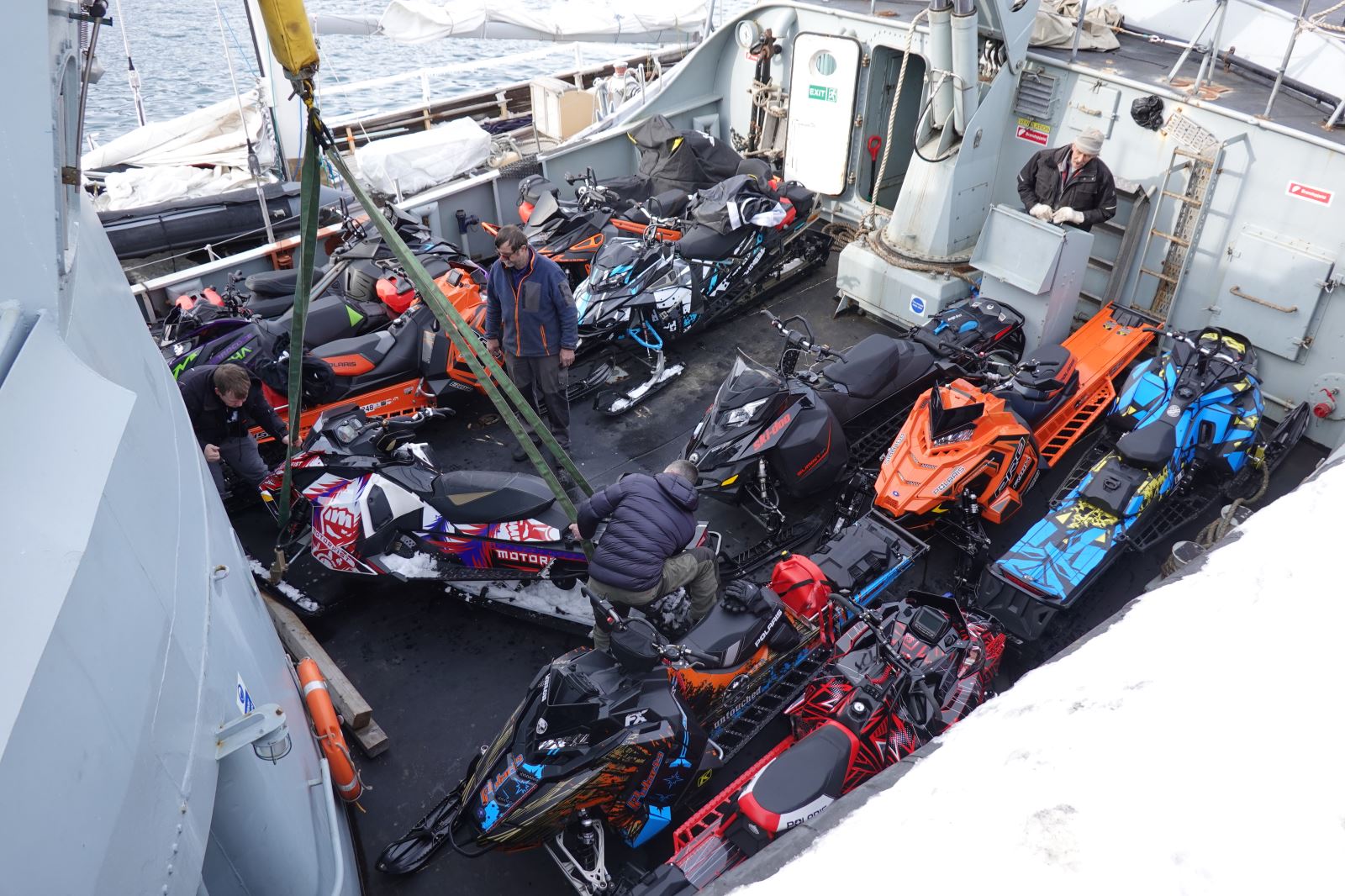
Another part of the day was gathering food and other supplies—enough to last them the entire 13 days on the ship, along with a little extra in case the group got detained for whatever reason anywhere along trip. That ended up being a lot of food and supplies.
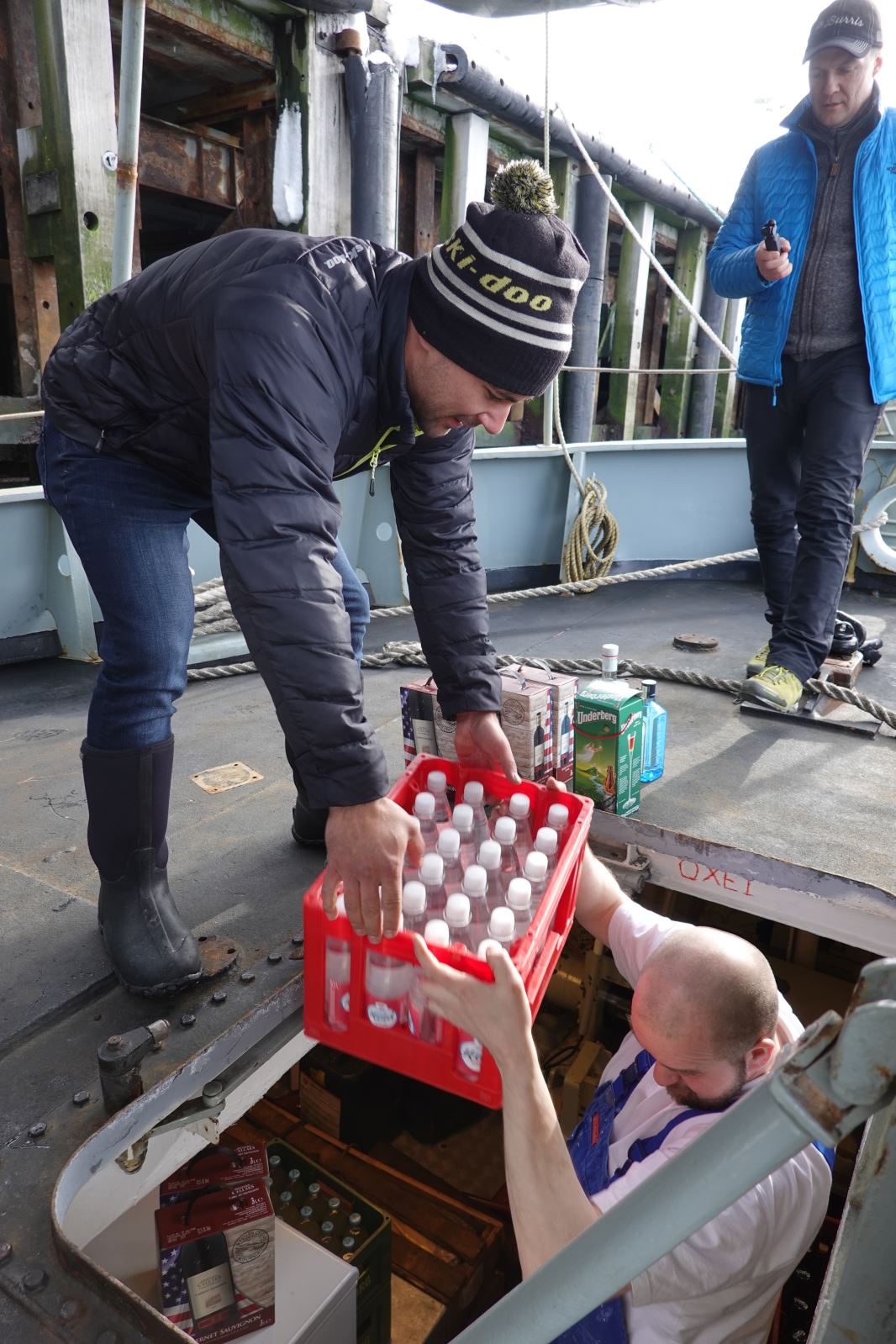
But finally the group was ready to go and the captain hit the air horn on Tulu about 6 p.m. that evening and they were off, heading out to open waters and turning north toward Maniitsoq. There they would pick up another rider.
Jenkins soon realized he wasn’t as ready for ocean sailing as he might have expected. “After 10 hours of sailing through some rough seas, I quickly realized I needed to get my sea legs,” he said. “After waking up at 2:30 a.m. in my bunk bed to what seemed as if I was standing in bed or standing on my head, I knew I was going to be up for the rest of the night.”
Day 2
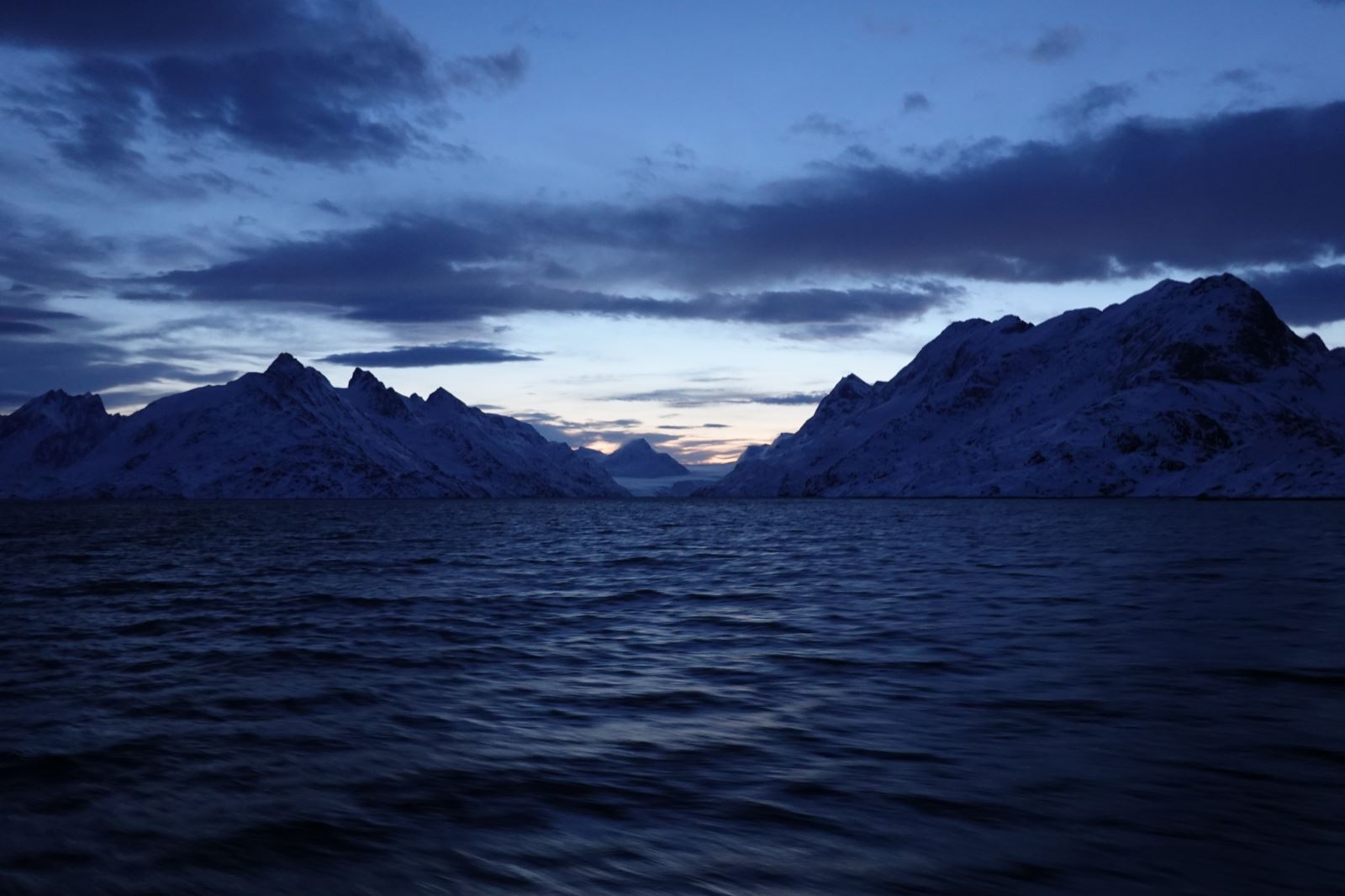
After picking up the rider in Maniitsoq, it was another 10 hours at sea to get to the village of Sisimiut, which, Jenkins said, in his opinion is the sled capital of Greenland. They were there to pick up another rider who ultimately didn’t make it in time to get on the ship. The group did have time to tour the town and visit the local Ski-Doo dealer.
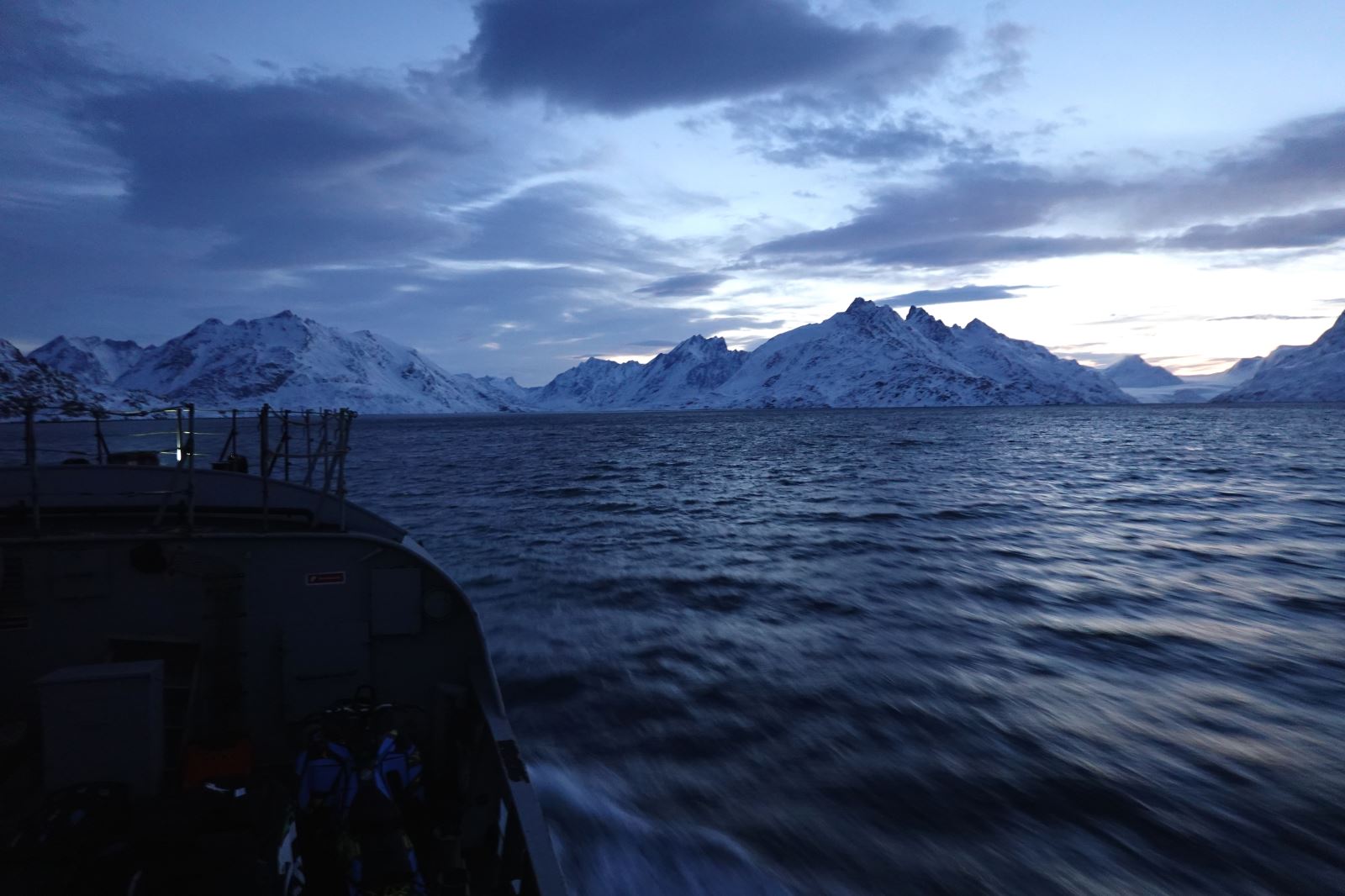
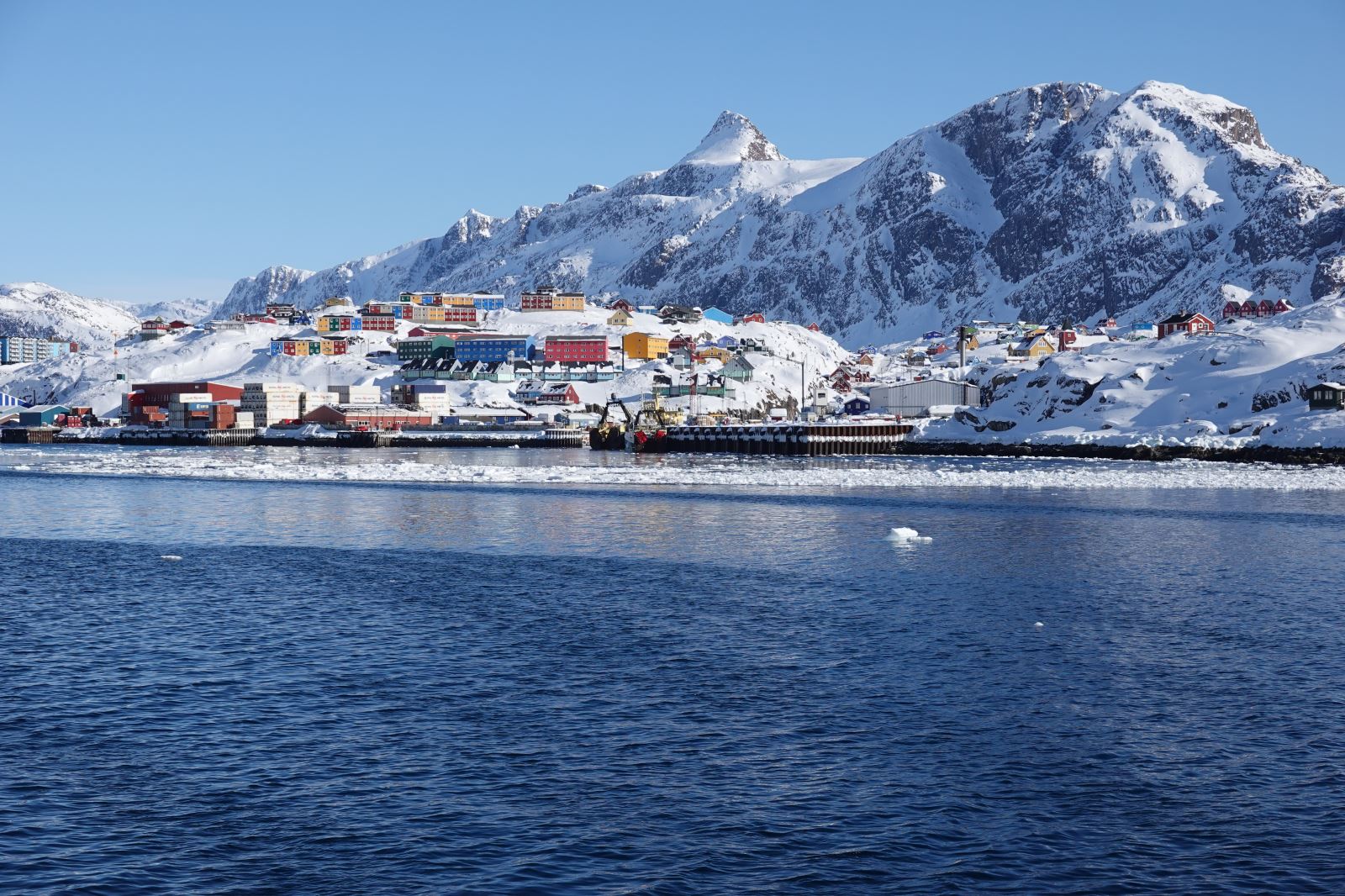
Once back onboard Tulu, it was another 18 hours of sailing with the destination this time Disko Island. Day two bled into day 3 on the ship.
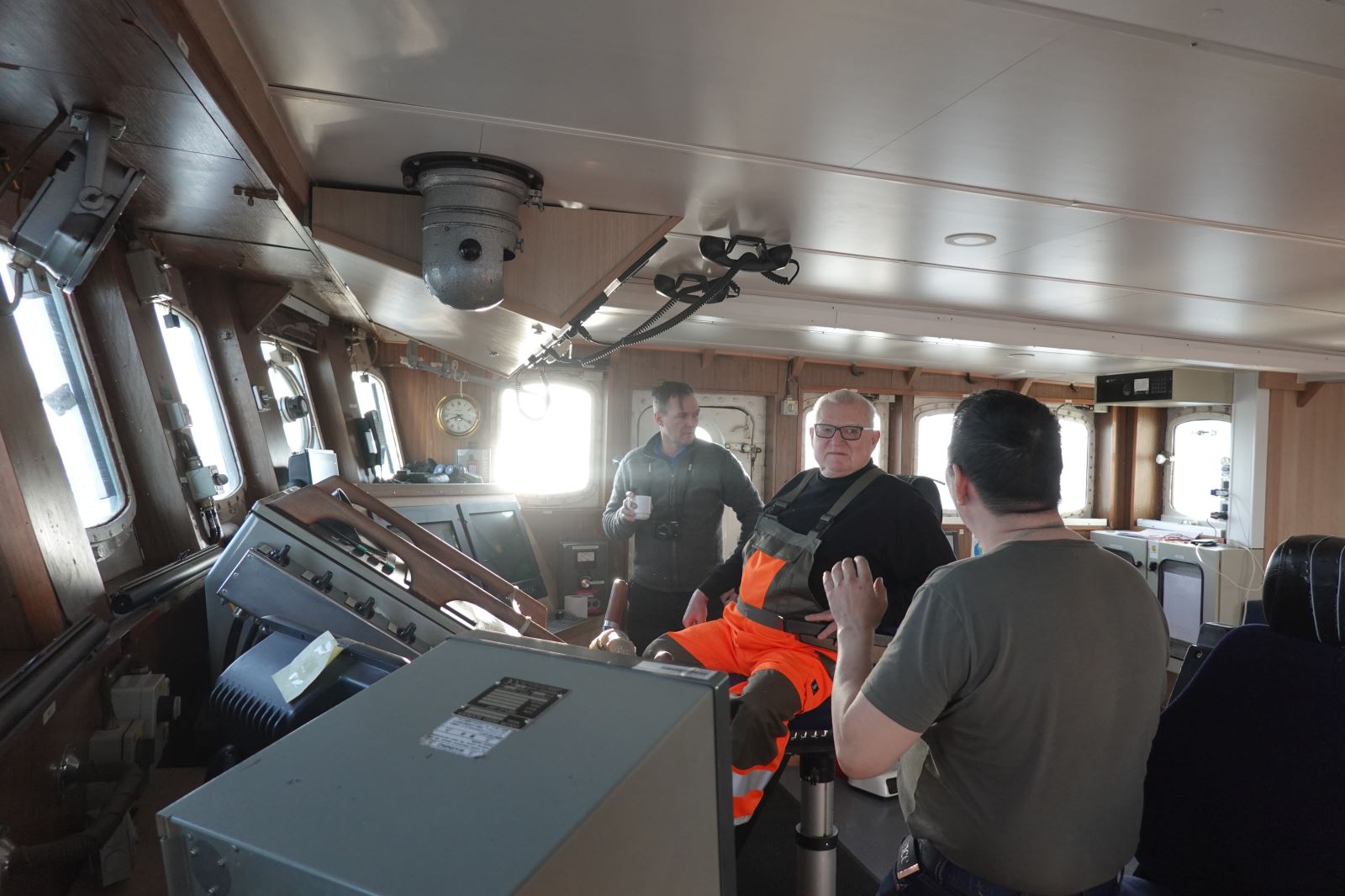
Day 3
Tulu and the group encountered sea ice after leaving Sisimiut. Jenkins details this part of the trip, saying, “… the sea ice was starting to move in from the north. As we were planning this trip everyone was monitoring the ice maps and were very nervous because the sea ice is always moving and shifting between the tides and wind. With these ice maps you’re given a rating of an ice scale from 1-10. As we approached the highlighted areas that showed the ice map you could read that the area was around No. 6, which wasn’t too bad. As for the owner of the ship and the locals, they knew from Sisimiut to Disko Island was probably going to be the worst area and would be the turning point of the trip. As we chugged north while listening to the ice scraping the sides of the boat like a tuna can, the guys were up in the wheel house debating if they wanted to hit the ice or not. It was determined by be captain that we were headed north and there was no turning back. After dinner I had to go up and see what all the racket was. As I approached the wheel house I couldn’t believe the ice that we were sailing though. At this moment I was seriously questioning what I was doing.

“Once we were late into the night, the ice decided to shift, making it very difficult to even sail. In fact, even with an 800 horse diesel two-stroke engine, Tulu was only doing one knot, not its usual 10 knots.
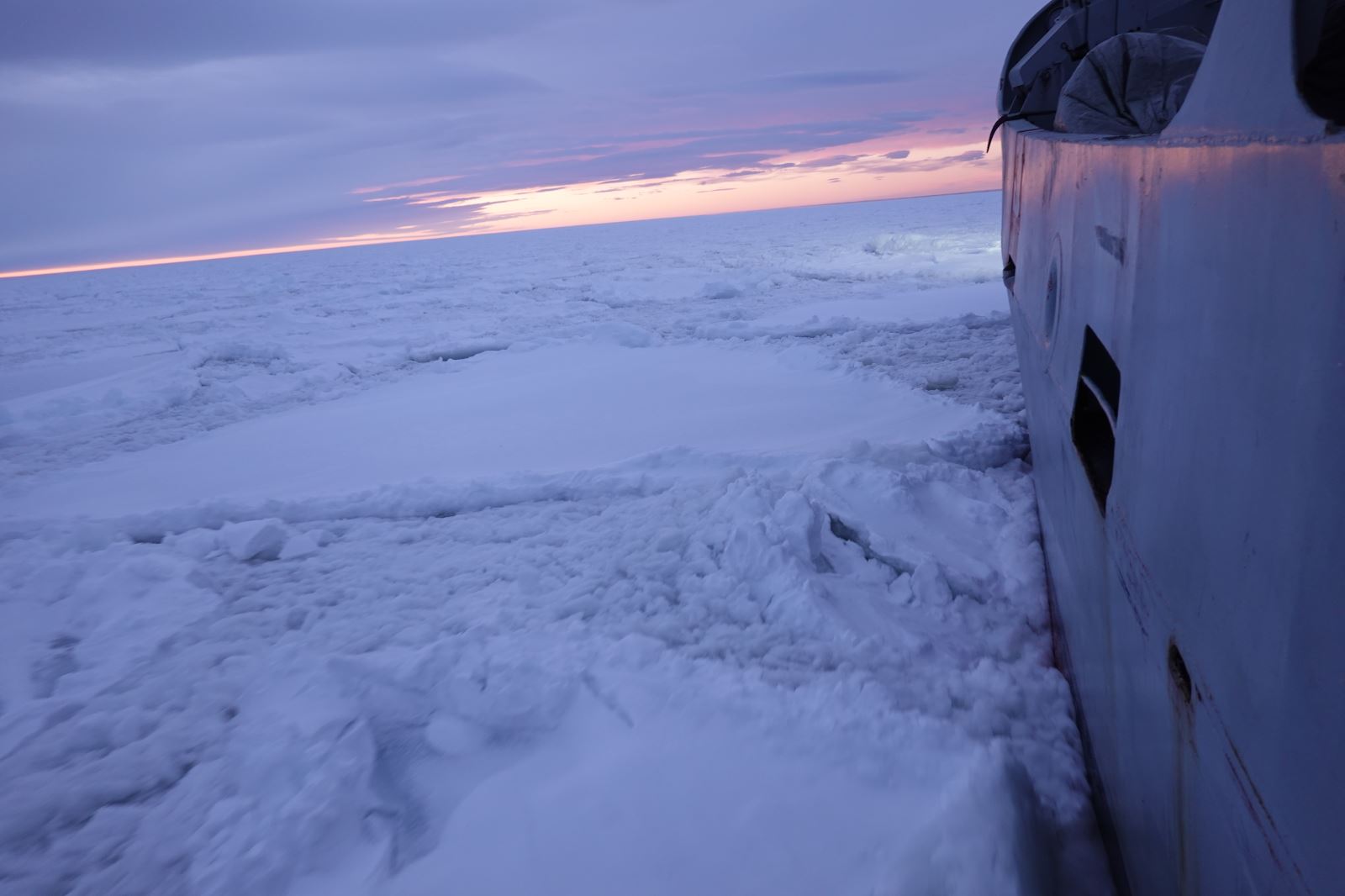
“Once you start approaching Disko you start to see these massive icebergs—icebergs ranging from the size of trucks to the size of islands that stood 300 feet tall.”
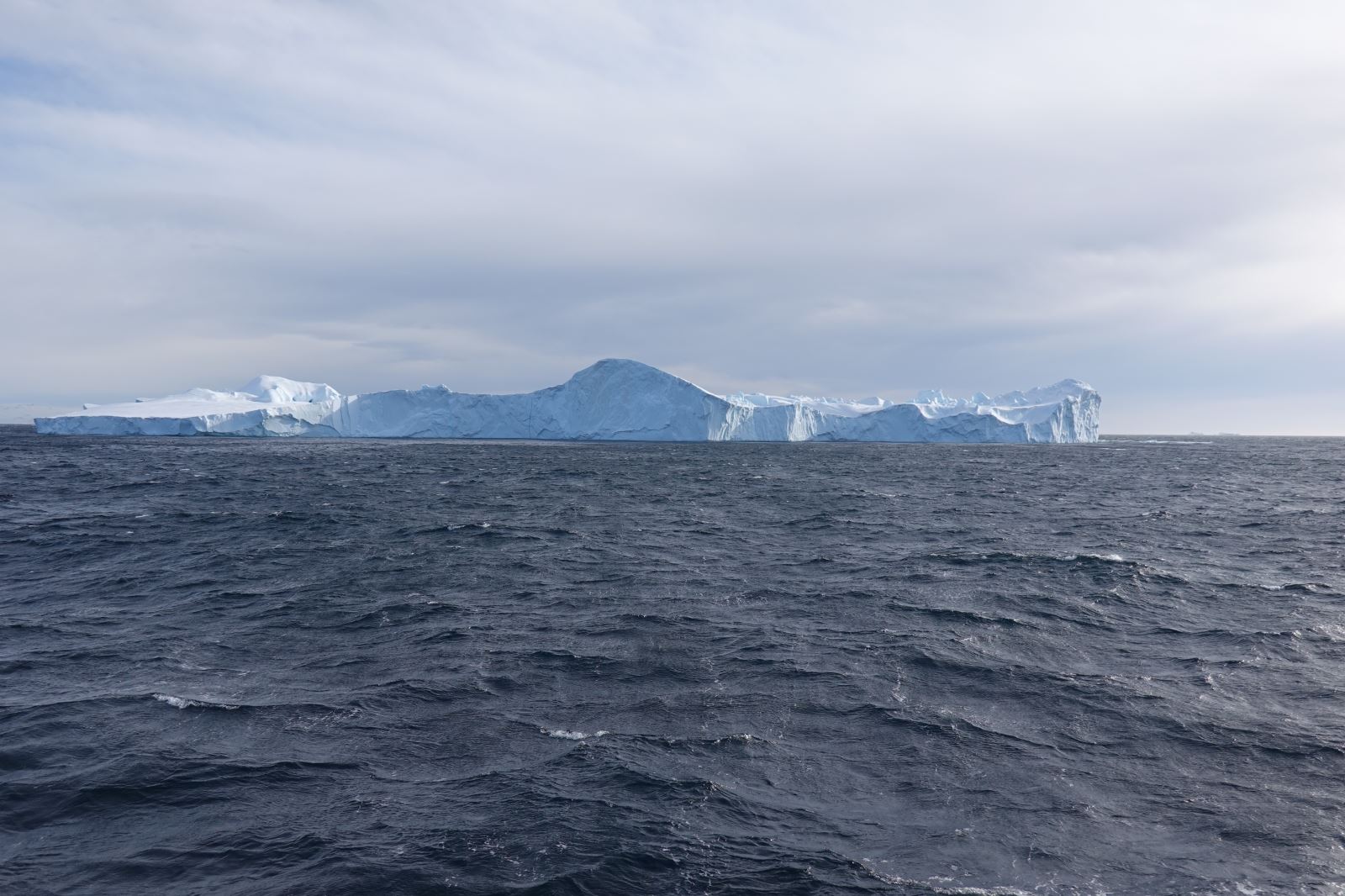
It was on day three that the group would finally be able to get on their sleds to ride. But first, the captain of Tulu had to find a place to “park” the ship as there wasn’t room in the harbor to do so. “So,” Jenkins said, “the captain backed the ship up and decided he was just going to park right into the solid frozen ice. As we rammed the ice you could watch the ship climb out of the water and onto the ice, then the ship would break through the ice and that’s where it stayed.”
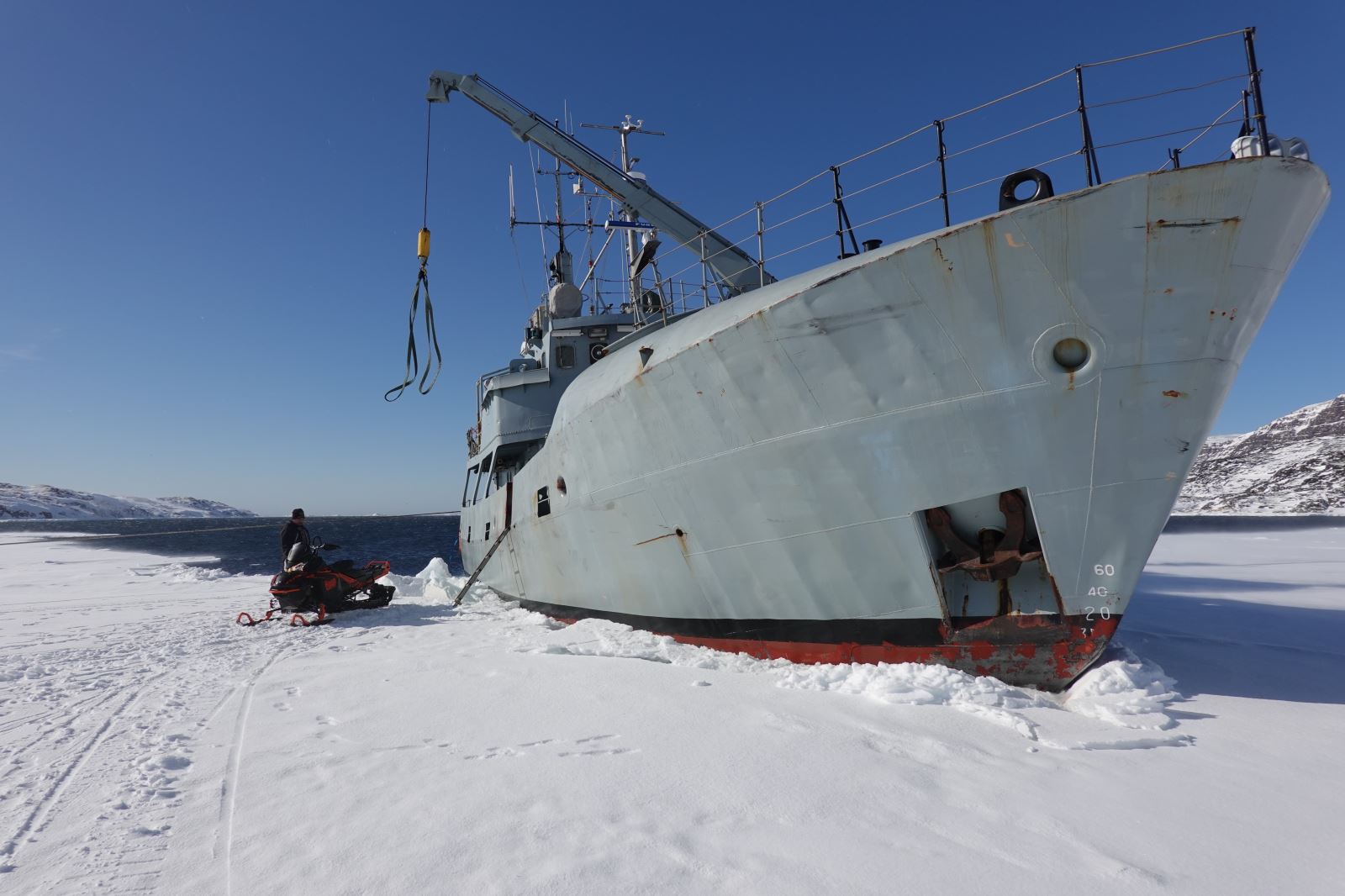
The group quickly realized the avalanche danger was high so they made “cautious decisions” as they headed out to ride. They headed to the mountains on Disko Island, which sits off the coast of Greenland. They went to some mountain tops to get a view of the lay of the land.
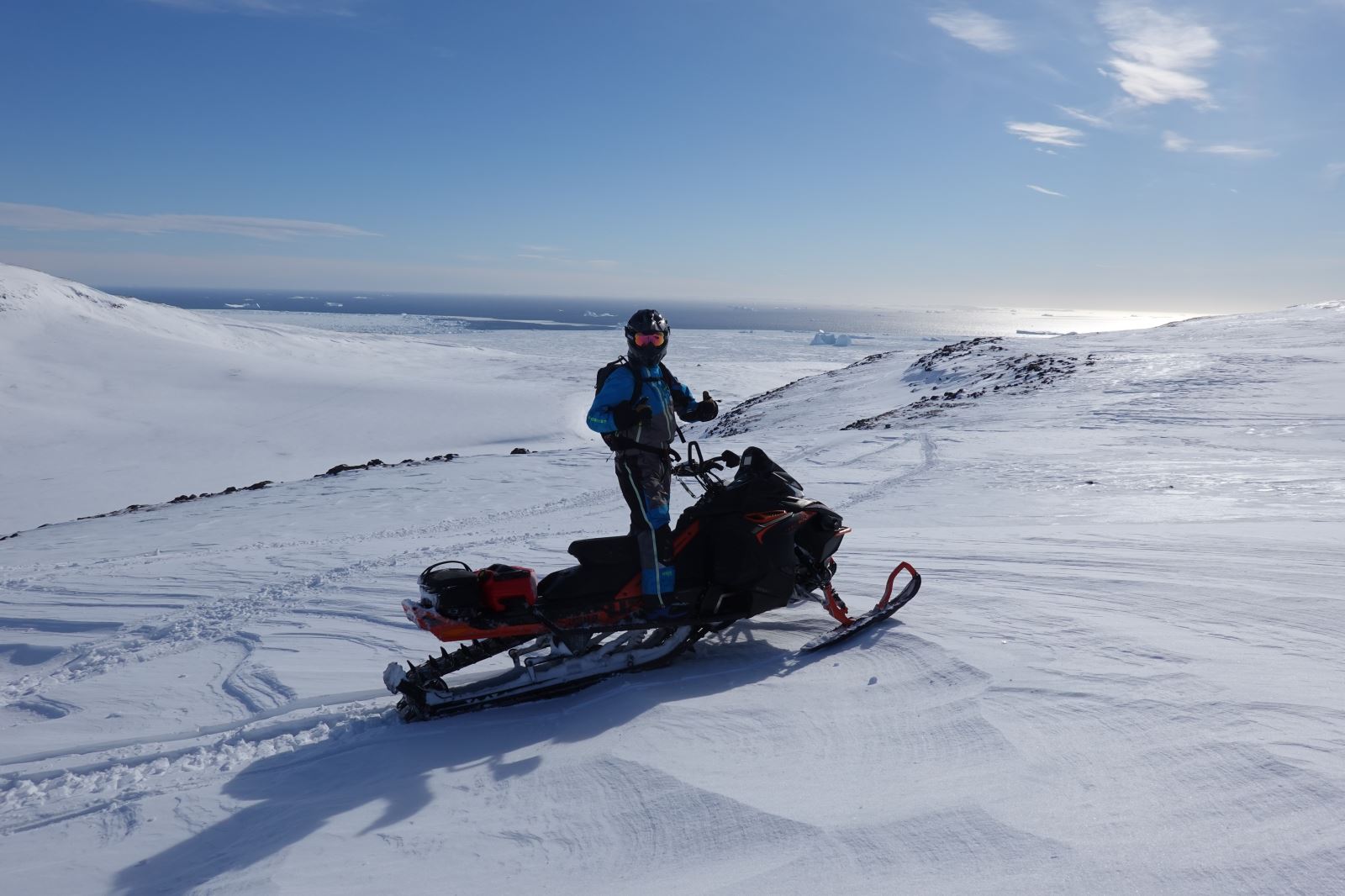

That set up day four’s ride, also on Disko Island, which we’ll get to in part two of Jenkins’ trip of a lifetime.